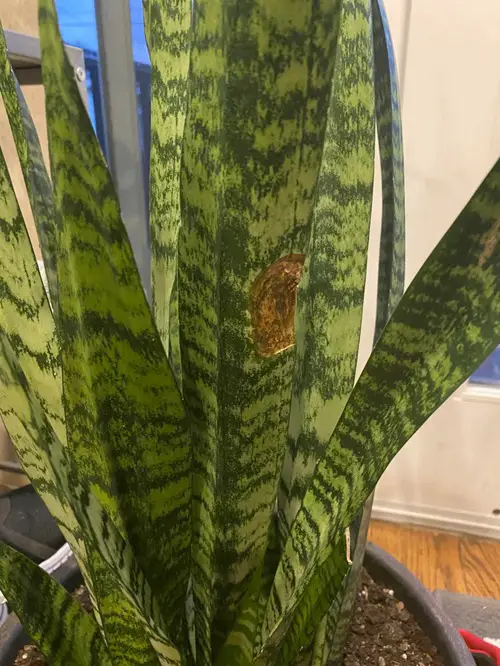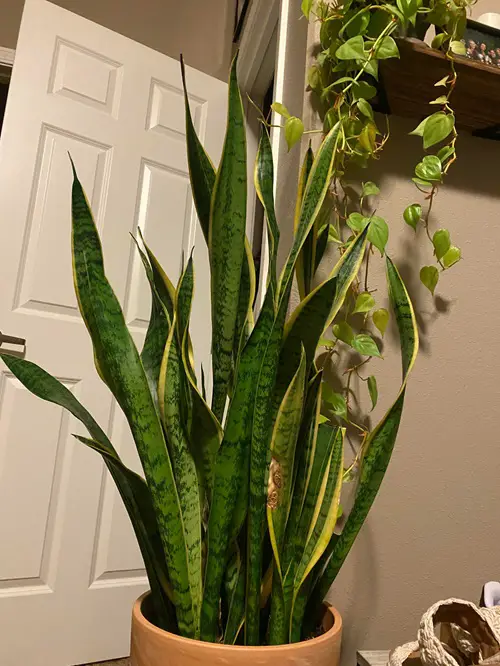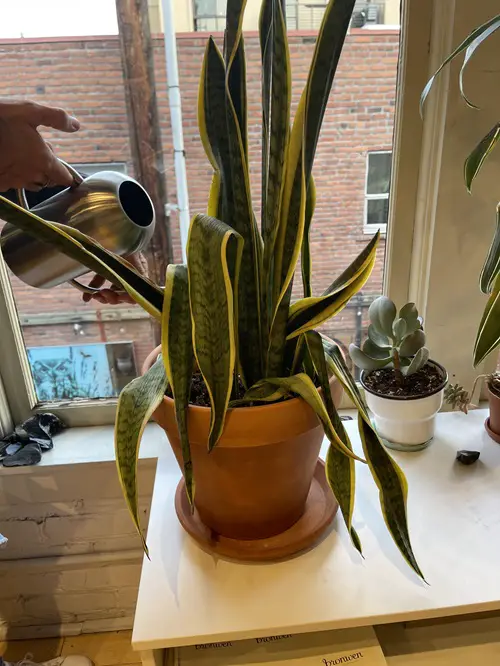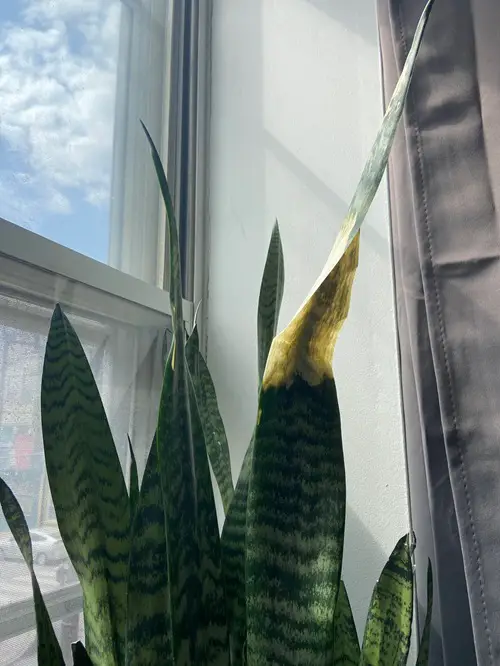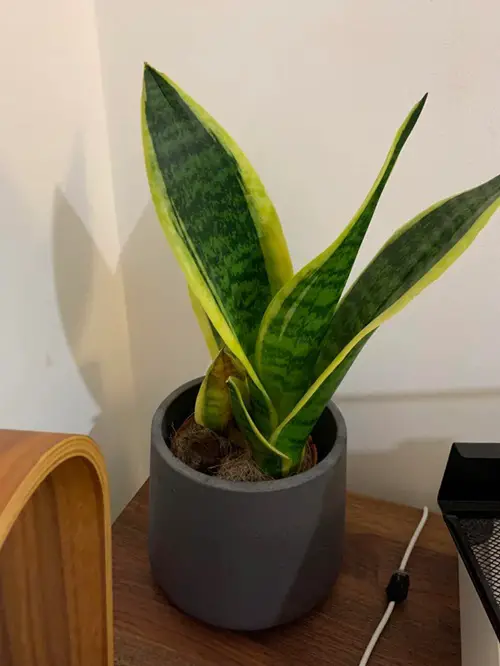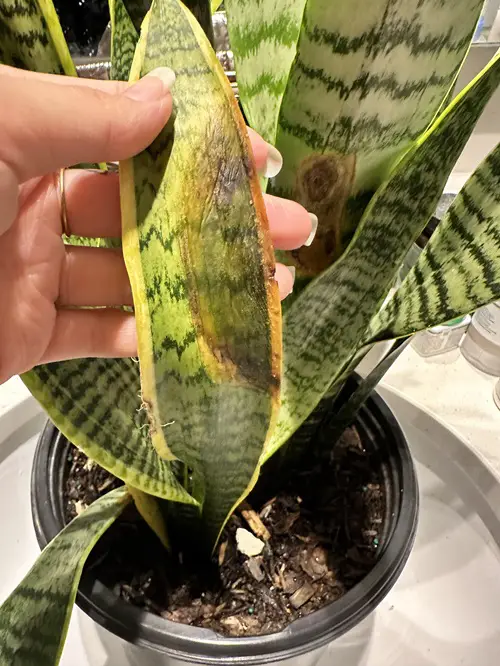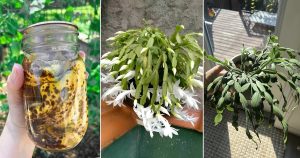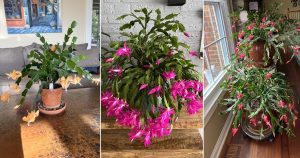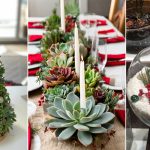The one-stop solution to those brown spots on Snake plants is here, so don’t skip the tips and tricks at the end!
Brown spots or dark patches on the foliage of Snake plants can indicate various underlying issues like the signs of some fungal diseases, sometimes it happens because of too much or too little water in the soil and many others. So, here are 7 such reasons behind brown spots on snake plants and ways to fix them!
Brown Spots on Snake Plants and The Solutions
1. Fungal Diseases
The most common cause of brown patches on Snake plants is fungal infestations. Like most plants, they are susceptible to fungal diseases such as southern blight and red leaf spots, which cause reddish-brown lesions on their leaves.
a. Red Leaf Spot
The red leaf spot disease is the first thing you need to check for if you notice red or brownish-red spots on your snake plant. This disease occurs because of high humidity and moist, warm temperatures.
In this case, you need to cut the infected leaves to stop further spreading of the reddish-brown spots to other areas as an initial treatment. Again use of fungicides with copper and sulfur properties as a spray can prevent it in the future.
b. Southern Blight
Southern blight is caused by the fungus “Sclerotium rolfsii”. It is a soil-borne disease that takes shelter in wet and hot conditions. Gradually, your snake plant will turn yellow and brown as it attacks the root system.
To fix this first off try spraying an active fungicide on your plant and soil. Observe for a few days and if the condition doesn’t heal then do a nice repotting with fresh soil and a new pot. Before repotting wash off the roots with the fungicide.
c. Rust
Rust is one more disease that causes dark spots on the foliage. Although Snake plants aren’t very prone to this disease, they can cause minor infections under unfavorable conditions. Fungi of the Heterobasidiomycetes subclass classification are known to infect living plant tissues, particularly leaves, and cause rust.
Rust fungi do not feed on dead organic matter, rather they suck the sap that is present in the leaves. This infestation can spread from one leaf to another by sucking the sap of healthy leaves. To treat this, the very first thing you must do is similar to the treatment of red leaf spot treatment. Cut off the damaged leaf sections and limit the watering to avoid more spreading.
2. Irregular Watering
Even if Snake plants are among the easy-to-handle, beginner-friendly plants, improper watering can still cause harm to them. Sometimes overwatering can lead to cause of brown spots on the leaf and again underwatering can also do the same by drying out the leaves to cause brown or dark spots!
So, watering intervals shouldn’t be monotonous because if the soil is too wet then the plant won’t be able to absorb all the water. Again, the same goes with underwatering issues, the leaves develop wrinkles and brown patches here and there showing signs of thirst. The best way to treat this is simple, just check the top inch layer of the soil before you water. If the soil is dry down there then go with a nice clean, room temperature water for your Snake plant.
3. Chlorinated Water
Chlorine can be present in tap water, especially in urban areas and it behaves like poison to Snake plants. If they regularly get chlorinated water, the chlorine will accumulate in the soil. This prevents the plants from absorbing nutrients and minerals from the soil further leading to showing brown spots on the leaves.
It also hinders the potassium intake in the roots, and deficiency in it causes brown leaves. To tackle this issue why not use filtered water? Pretty simple right? Or use RO water to pour on your green babies to put a full stop to this problem.
4. Too Much Sunbathing
Snake plants are typically partial shade lovers! They do not need the brightest sun rays and long exposures to the sun. In fact, they thrive best in dappled sunlight conditions and struggle less in not-so-bright spaces. Too much exposure to sunlight causes sunburns that appear in yellow or brown patches on its foliage.
So, try keeping them in bright spaces with indirect sunlight and also, rotate the plants from time to time so that they receive light from all sides. This promotes uniform growth and prevents leggy or tilted growth. If your Snake plant is indoors, you can also use fluorescent LED lights if needed.
Pro Tip: Give your plants a definite routine of light and a dark phase in the ratio of 16:8 hours for best growth results because the dark is as important as the light!
5. Exposure to Extreme Low Temperatures
Like any other houseplant, Snake plants too do not tolerate sudden temperature fluctuations! This thing is important, especially for the winter months. Because, if the plant is exposed to temperatures below 55 F then it will develop brown spots on the foliage as a sign of severe stress.
When indoors, try to maintain a temperature in the range of 65-80 F and bring the outdoors ones inside if you live in zones that get extremely cold in the winter season. While also allowing your plant to have a morning sunbath and enjoy the warmth.
Pro Tip: Avoid keeping them near drafty windows or entrances and also never near the heater or AC.
6. Over-Fertilization
As a low-maintenance plant, this beauty doesn’t demand anything, not even frequent feeding of fertilizers or nutrients. However, a good amount can bring a certain glow to your plant with healthy green growth. While doing this, see that you are not overdoing it! Because the fertilizers accumulate in the soil and from there, your plant will absorb.
Besides, it will absorb only the amount that it needs and the rest stays in the soil and makes the soil too acidic. This leads to brown leaves, dark spots, and yellow leaves. It happens quite a lot in the winter season because the Snake plant undergoes a dormant period during this time and doesn’t need feeding. So, stop feeding too much, and rather once a month during spring-summer is the best way to resolve this issue.
7. Other Pest Infections
Pests like mealybugs, spider mites, and fungus gnats are common enemies. These pests feed on the leaves and in return cause brown spots. They generally feed on the nutrients of the plant and dehydrate it which also causes wrinkles on the stems and flowers.
The best way to outrun such attackers is the use of neem oil and a soapy or detergent spray. Soap water can be made by adding five tablespoons of dish soap to 4 cups of water. You can also use alcohol spray by mixing isopropyl alcohol with distilled water(d/w) in a ratio of 70:30 for 100 ml (70 ml alcohol in 30 ml d/w).
Hope this helps to save your plant from brown spots! Do let us know when it works in the comment section below. Plus, we won’t mind if you spread the good news to your plant lover family.

